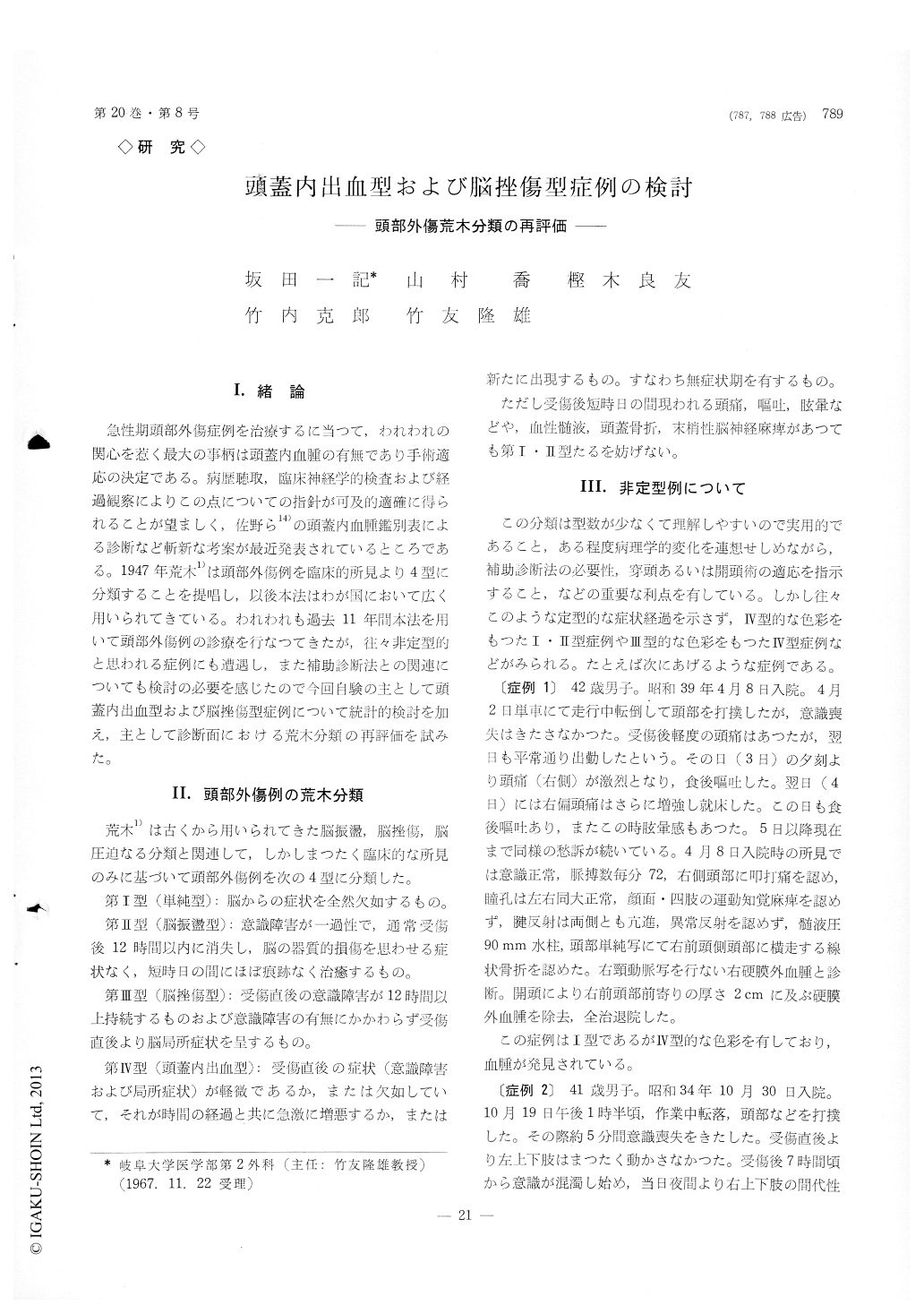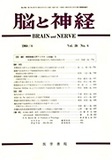Japanese
English
- 有料閲覧
- Abstract 文献概要
- 1ページ目 Look Inside
I.緒論
急性期頭部外傷症例を治療するに当つて,われわれの関心を惹く最大の事柄は頭蓋内血腫の有無であり手術適応の決定である。病歴聴取,臨床神経学的検査および経過観察によりこの点についての指針が可及的適確に得られることが望ましく,佐野ら14)の頭蓋内血腫鑑別表による診断など斬新な考案が最近発表されているところである。1947年荒木1)は頭部外傷例を臨床的所見より4型に分類することを提唱し,以後本法はわが国において広く用いられてきている。われわれも過去11年間本法を用いて頭部外傷例の診療を行なってきたが,往々非定型的と思われる症例にも遭遇し,また補助診断法との関連についても検討の必要を感じたので今回自験の主として頭蓋内出血型および脳挫傷型症例について統計的検討を加え,主として診断面における荒木分類の再評価を試みた。
Prof. Araki's classification of head injury cases is not only useful for estimating severity of head in-juries but also diagnostically useful in that its IV th type (the intracranial hemorrhage type) shows an indication for operative treatment. In applying this classification practically atypical cases are encountered occasionally. We analyzed our own 137 cases be-longing mainly to the IV th type and the III rd cerebral contusion) type from the standpoint ofclinical course and symptoms, and examined in what group of the cases incidence of intracranial hemato-ma was high and prognosis could be improved by operative treatment. Reference was made to the way of applying this classification to atypical cases. As for diagnosis of intracranial hematoma, cases, in which the clinical IV th type diagnosis, immediately or simply after echoencephalography, is followed by exploratory trephination or craniotomy, are limited to ultra-emergency cases, and usually emer-gency carotid angiography precedes the operation. However, carotid angiography- is not without harm for severe head injury cases. Thus, following con-clusions were reached as for diagnostic application of this classification to head injury cases.
Prof. Araki's classification will continue to be useful for diagnosis of head injury cases, but foll-owing supplementary notes will be added in its application. 1) Cases of the IV th type, typical or atypical, have an indication for emergency angio-graphy, except for some ultra emergency cases as described above. 2) Cases of the I st (simple) or the II nd (cerebral concussion) type, in which sub-jective symptoms show rapid aggravation, have a relative indication for emergency angiography. 3 Severe III rd type cases have also a relative indication for emergency angiography, but possibility of post-angiographic aggravation and relatively poor pro-gnosis despite hematoma evacuation in this group should be remembered.

Copyright © 1968, Igaku-Shoin Ltd. All rights reserved.


